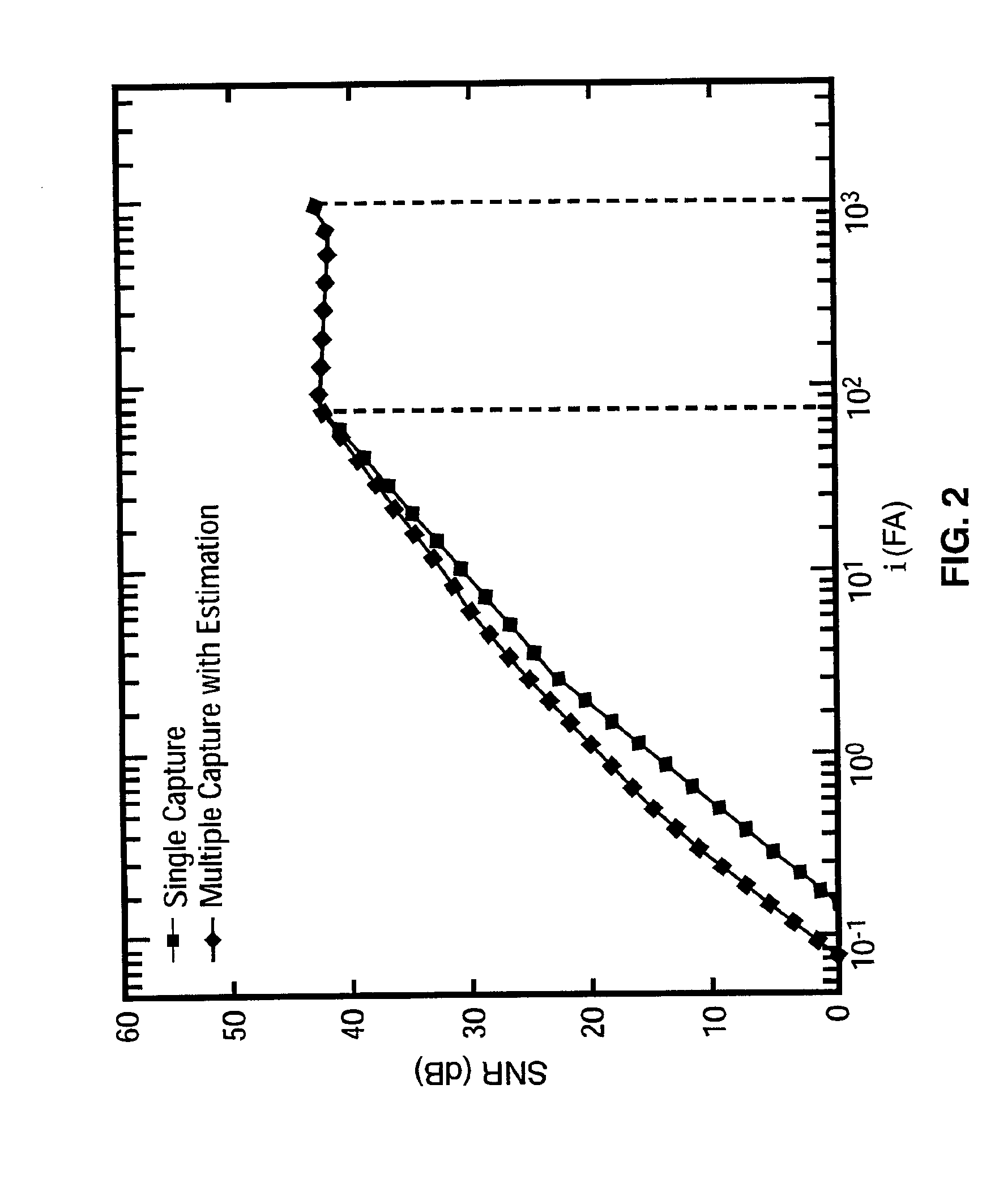CMOS image sensor system with self-reset digital pixel architecture for improving SNR and dynamic range
a digital pixel sensor and image sensor technology, applied in the field of digital pixel sensor architecture, can solve the problems of limited dynamic range, limited readout rate, ccd sensor, etc., and achieve the effects of improving dynamic range and signal-to-noise ratio, improving snr, and extending dynamic rang
- Summary
- Abstract
- Description
- Claims
- Application Information
AI Technical Summary
Benefits of technology
Problems solved by technology
Method used
Image
Examples
Embodiment Construction
[0072]Analog circuit design in a mixed signal environment has become more and more challenging as the industry migrates to deep submicron regime. For example, signal swing, the most important factor in determining an image sensor's dynamic range and SNR, is dramatically reduced as technology scales. This is especially evident in APS image sensor implementations where, as power supply voltage reduces, the analog signal swing decreases rapidly. With a small analog signal swing and its associated noise, it is extremely hard to get a typical 8-bit image using an on-chip ADC. The situation for DPS image sensors is better because the ADC is usually substantially closer to the signal source.
[0073]There are several known implementations providing sensor dynamic range enhancement, including multiple sampling, i.e., capturing multiple pixel samples, as well as well adjustment schemes. However, these implementations suffer drawbacks such as limited application, e.g., only work for still images...
PUM
 Login to View More
Login to View More Abstract
Description
Claims
Application Information
 Login to View More
Login to View More - R&D
- Intellectual Property
- Life Sciences
- Materials
- Tech Scout
- Unparalleled Data Quality
- Higher Quality Content
- 60% Fewer Hallucinations
Browse by: Latest US Patents, China's latest patents, Technical Efficacy Thesaurus, Application Domain, Technology Topic, Popular Technical Reports.
© 2025 PatSnap. All rights reserved.Legal|Privacy policy|Modern Slavery Act Transparency Statement|Sitemap|About US| Contact US: help@patsnap.com



